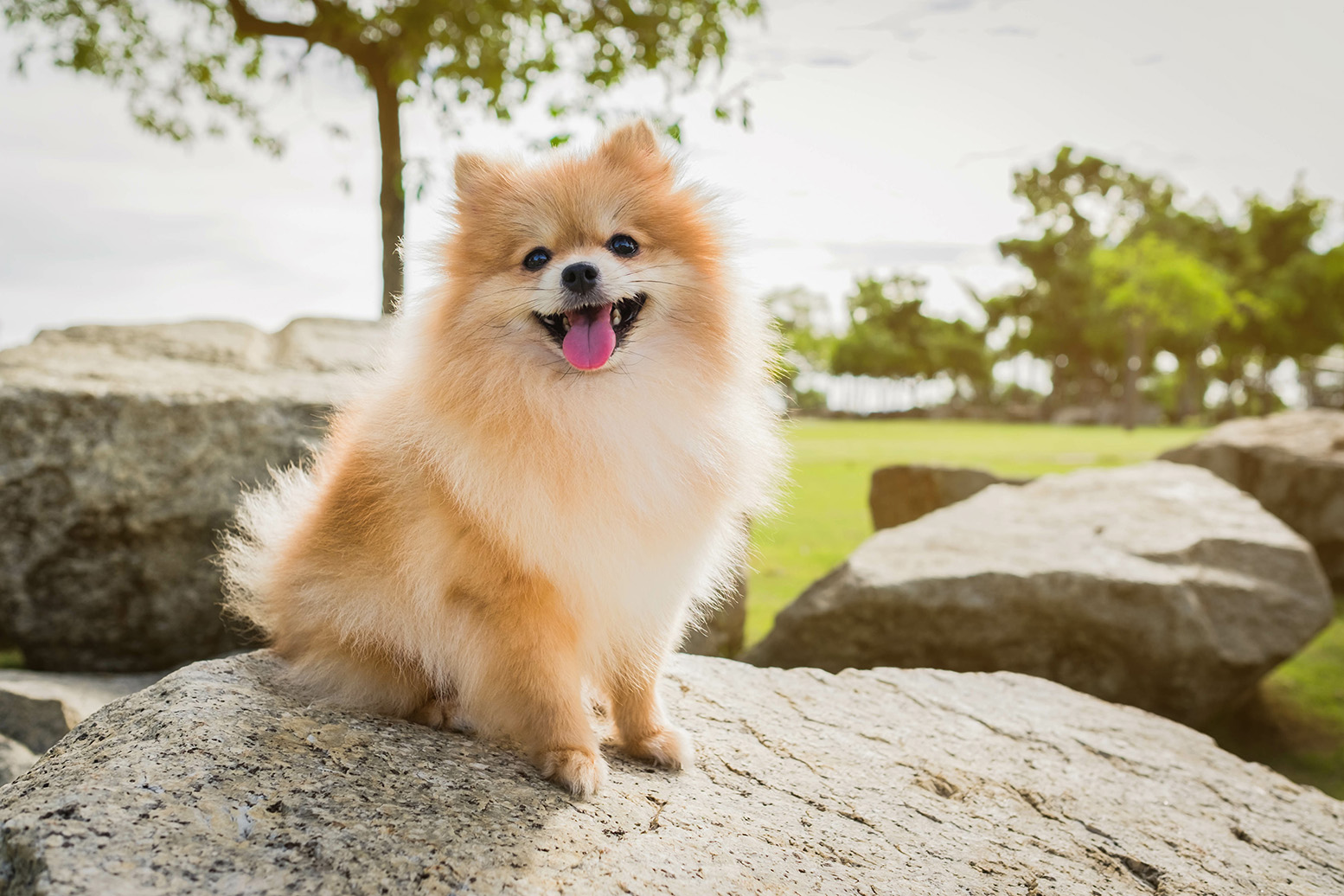Pomeranian

Description
The Pomeranian is a small and spirited toy breed known for its fluffy double coat, fox-like face, and lively personality. Weighing between 3 to 7 pounds and standing 6 to 7 inches tall, the Pomeranian is a compact but robust dog that combines elegance with a feisty attitude. This breed is instantly recognizable by its abundant, plumed tail carried over its back and its wide variety of coat colors, including orange, cream, black, blue, sable, and more. Despite its small size, the Pomeranian is known for its confident demeanor and energetic nature.
Pomeranians are highly intelligent and quick learners, excelling in activities such as obedience, tricks, and even agility. They are social dogs that form strong bonds with their families and thrive on interaction, often seeking to be the center of attention. While they are playful and curious, they also have a bold, sometimes stubborn streak that adds to their charm. Their alertness makes them excellent watchdogs, as they are quick to bark at unfamiliar sounds or strangers.
One of the most endearing traits of the Pomeranian is its versatility. It is equally happy being a pampered lapdog or an active participant in play and exploration. While its luxurious coat requires regular grooming to keep it in top condition, its size and adaptability make it well-suited for various living environments, from apartments to larger homes with yards. The breed enjoys daily walks and interactive playtime to stay mentally and physically stimulated.
With their combination of beauty, intelligence, and vibrant personality, Pomeranians are beloved by dog enthusiasts around the world. Their compact size, engaging temperament, and regal appearance make them a popular choice for individuals and families seeking a small dog with a big presence. Whether as a show dog or a cherished companion, the Pomeranian continues to captivate hearts and bring joy to those who welcome them into their lives.
History
The history of the Pomeranian traces back to the Arctic regions, where their ancestors, larger sled-pulling spitz-type dogs, were used for working tasks such as herding and hauling. Over time, these dogs made their way to the Pomerania region, an area that spans parts of modern-day Poland and Germany. It was in Pomerania that the breed began to be selectively bred into a smaller size, becoming the foundation of the Pomeranian we know today. Despite their reduced size, these early Pomeranians weighed around 20 to 30 pounds, much larger than the toy-sized breed recognized today.
The breed gained significant popularity in the 18th and 19th centuries, particularly among European royalty. Queen Victoria of England played a pivotal role in refining and popularizing the Pomeranian as a companion dog. During a visit to Italy in the late 1800s, Queen Victoria became enchanted by a particularly small and fluffy Pomeranian named Marco, whom she brought back to England. Her passion for the breed spurred a trend for even smaller Pomeranians, leading breeders to focus on reducing the size further while enhancing their distinctive fluffy coat.
By the late 19th century, the Pomeranian had become a well-established toy breed, and its popularity spread rapidly across Europe and the United States. The breed was officially recognized by the American Kennel Club (AKC) in 1900, and it quickly became a favorite among dog lovers for its charming personality, elegant appearance, and manageable size. Through selective breeding, the Pomeranian’s weight was reduced to its modern standard of 3 to 7 pounds, while its coat and distinctive features were further refined.
Today, the Pomeranian is one of the most beloved toy breeds in the world, admired for its rich history, vibrant personality, and striking appearance. Its journey from the Arctic working dogs to a cherished companion of royalty and modern families highlights its adaptability and enduring appeal. Whether as a show-stopping performer in the ring or a loyal lapdog, the Pomeranian’s legacy continues to thrive.
Colors
• Beaver
• Beaver Sable
• Black
• Black & Brindle
• Black & Tan
• Blue
• Blue & Tan
• Blue Brindle
• Blue Merle
• Blue Sable
• Brindle
• Chocolate
• Chocolate & Tan
• Chocolate Merle
• Chocolate Sable
• Cream
• Cream Sable
• Orange
• Orange Sable
• Red
• Red Sable
• Tricolored
• White
• Wolf Sable


